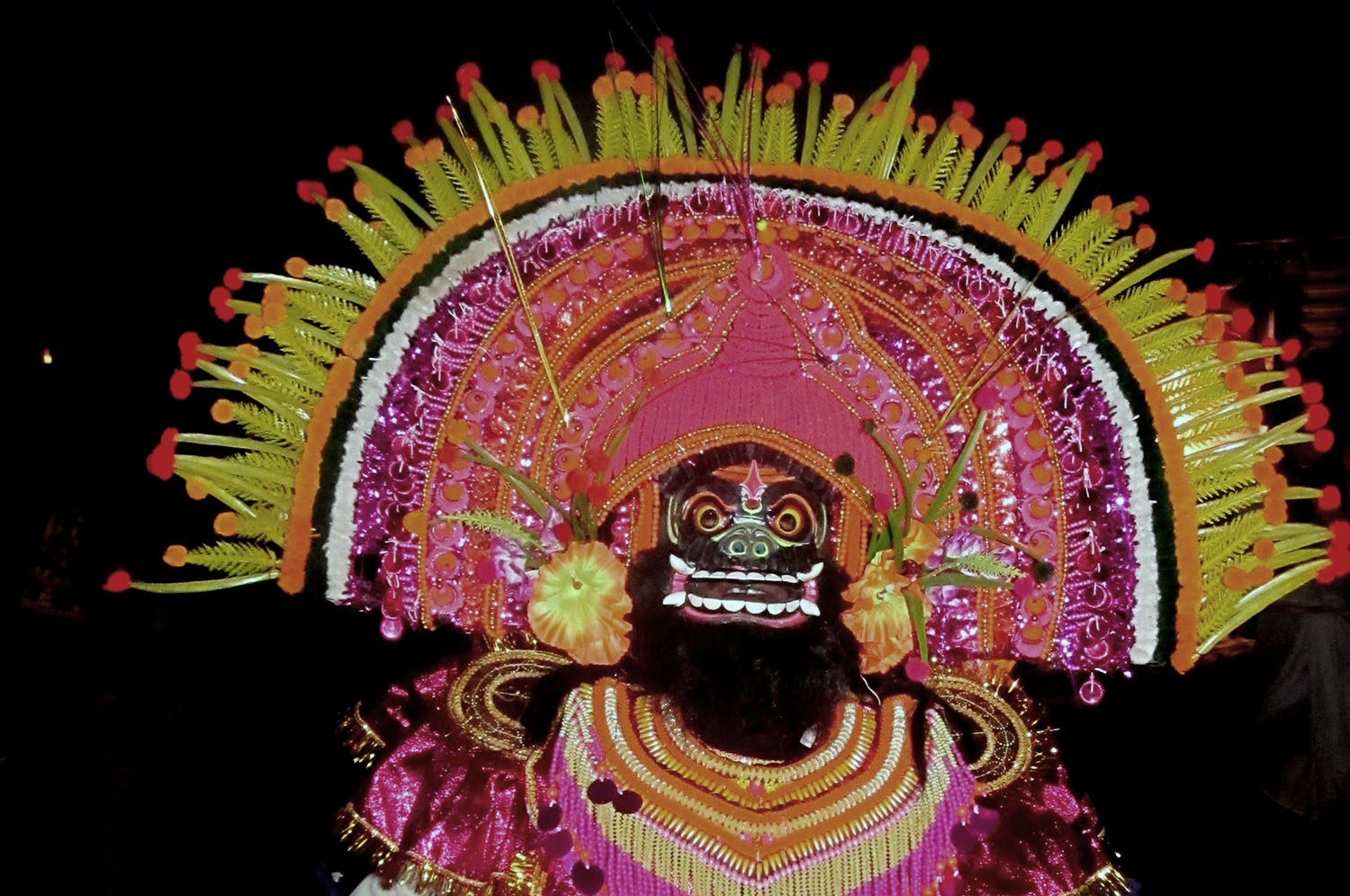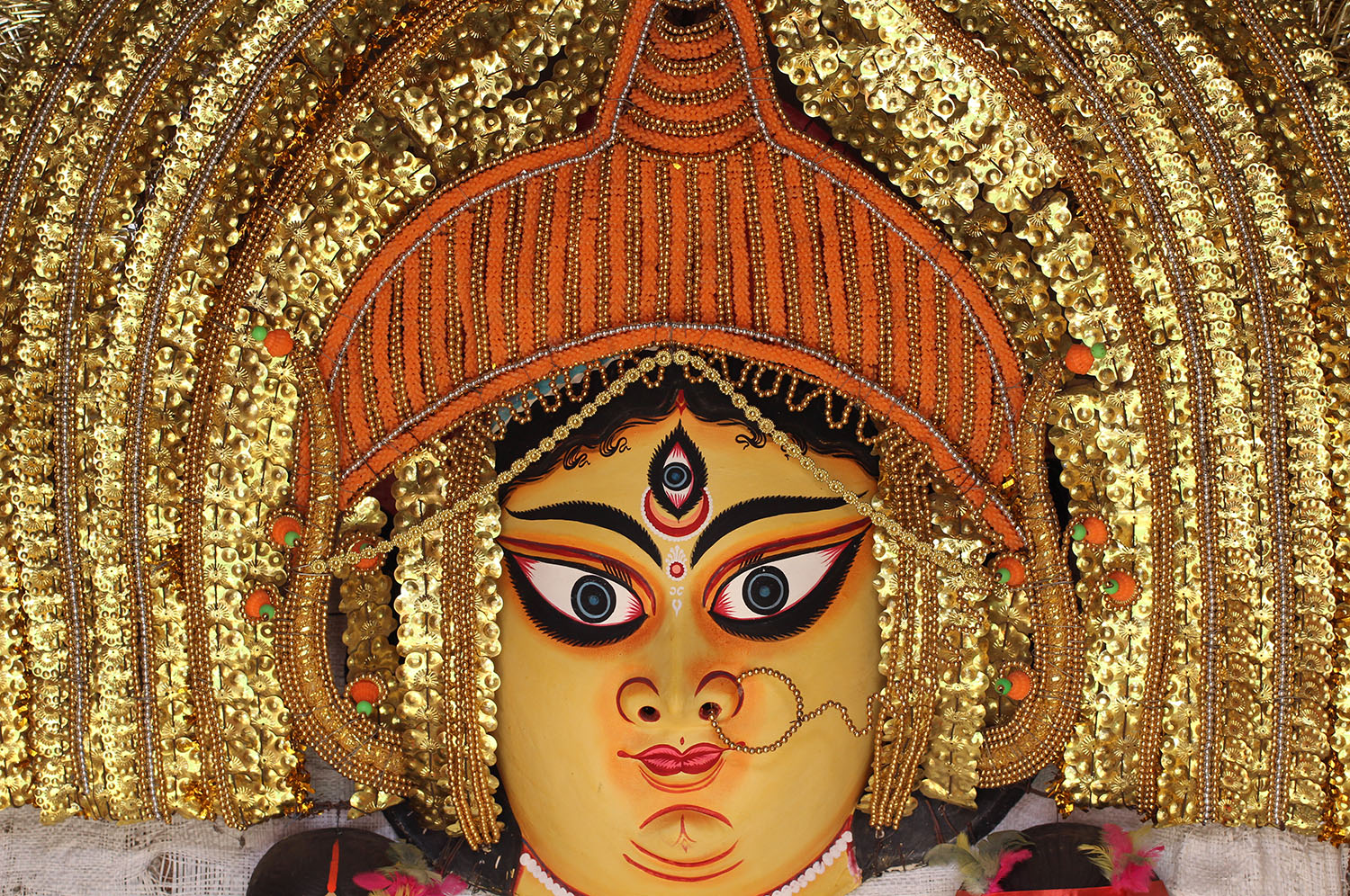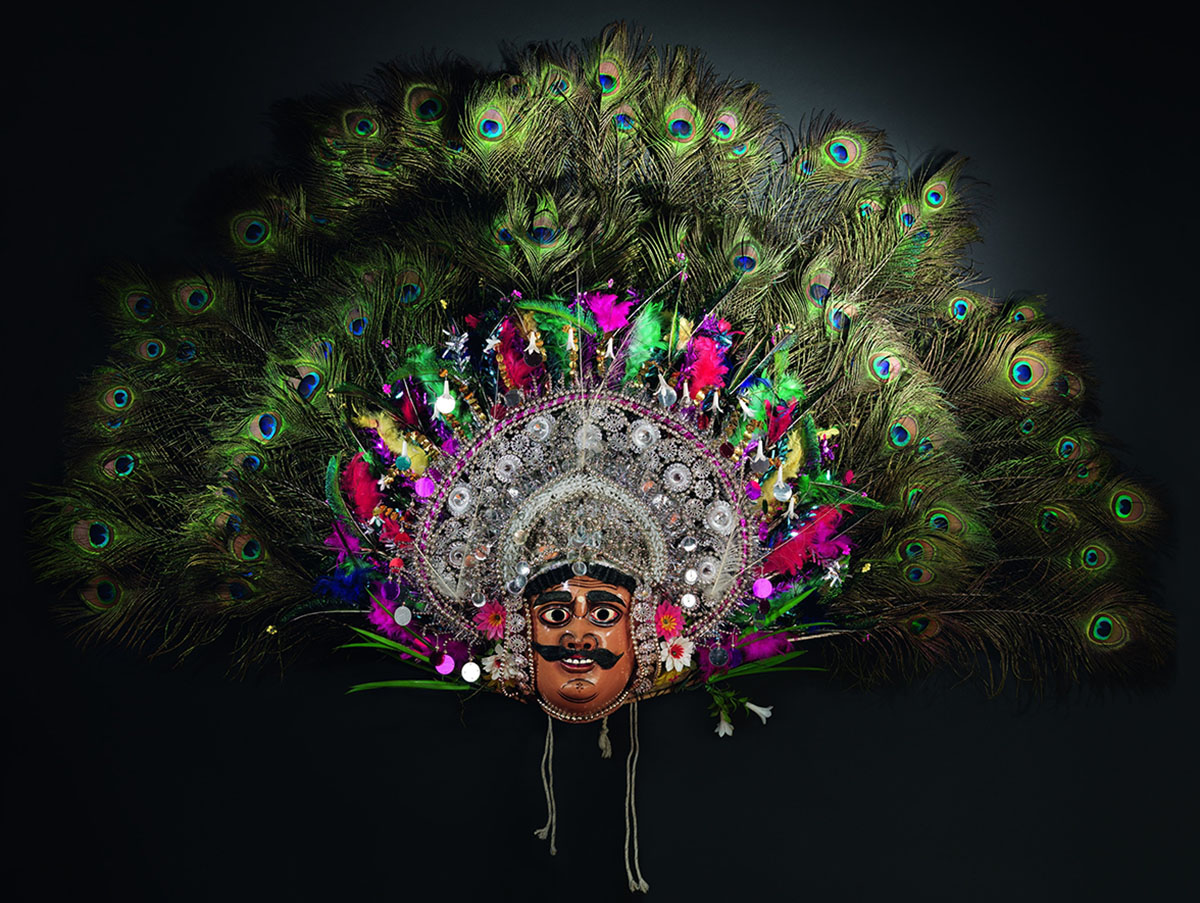ARTICLE
Chhau Masks
Large, colourful masks of clay and wood, chhau masks are used for chhau performances in the states of West Bengal, Jharkhand and Odisha. There are three major styles of chhau: Mayurbhanj, Seraikela, and Purulia. Each has a differing approach to the use of facial covering. Mayurbhanj chhau used masks till as late as the nineteenth century, but now only uses paint, make-up and costumes, allowing its performers considerable freedom of movement. In contrast, masks are an essential feature of Purulia and Seraikela chhau. Seraikela chhau, in particular, includes subtle neck movements in its repertoire in order to animate the performers’ masked faces. Chhau masks can sometimes be very large and elaborately decorated, contributing to the arrangement of the scene and its impact on the audience.
While Seraikela chhau is performed traditionally under the patronage of the indigenous royal family and the dancers are from the Kshatriya (warrior) caste, Mayurbhanj and Purulia chhau are performed by members of the Scheduled Castes.
Seraikela and Purulia chhau masks are made with similar construction methods. Clay is layered onto a base of cane or wood to create a mould. When it dries, it is detached from the base and covered with papier mache, followed by another layer of clay. Cotton fabric strips are used to reinforce the structure. As it dries over the course of three days, jute and acrylic wool are used to add details such as facial hair. Additional decorations and paint are applied afterwards. Older masks may be polished to impart a sheen before a performance.
Purulia chhau masks cover the entire face, reaching over the top of the head until the base of the skull. Halos of wire, decorated with colored beads and sequins to signify deities, demons, or forest animals, are added around the top. Characters depicted by these masks include the goddess Durga and the demon Mahishasura as well as figures from the Mahabharata and the Ramayana like Arjuna and Lakshmana, usually shown with pink faces and black moustaches.Rama is depicted with a green mask, while a blue mask is used for Krishna. A mask for the half-man, half-lion deity Narasimha usually has a mane and large, wild eyes; an elephant mask is used for Ganesha; Shiva’s mask features serpents and ropey, matted hair; his son Skanda, traditionally believed to be handsome, is given a pink visage.
In comparison to Purulia chhau, Seraikela chau relies extensively on masks which subtly represent essential attributes of the character being portrayed. For example, Ratri (Night) is depicted with her eyes half-closed, while the Hamsa (Swan) wears a long beak. They are usually made from the dark clay found in and near the Kharkhai river, which flows through the region. Seraikela chhau masks are light but cover the whole face of the performer, with small slits for the eyes and nostrils which make it difficult to see or breathe properly.
Chhau mask makers have adapted according to the changing demands of performance as well as new consumers such as art collectors. More recently, since the onset of the COVID-19 pandemic, they have also begun making safety masks for general use, basing their designs on chhau masks.
Bibliography
Our website is currently undergoing maintenance and re-design, due to which we have had to take down some of our bibliographies. While these will be re-published shortly, you can request references for specific articles by writing to hellomapacademy@map-india.org.










